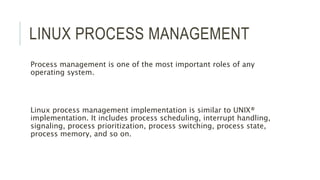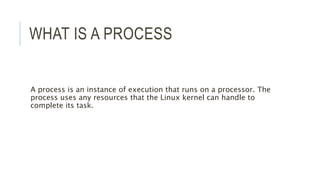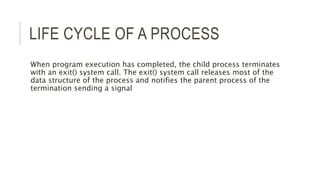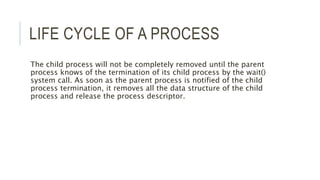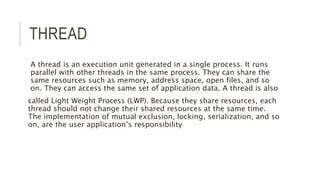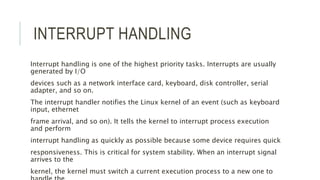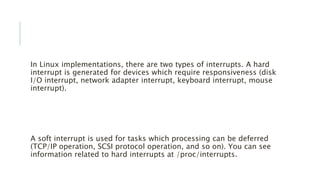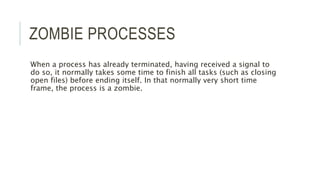The document discusses key concepts related to process management in Linux, including process lifecycle, states, memory segments, scheduling, and priorities. It explains that a process goes through creation, execution, termination, and removal phases repeatedly. Process states include running, stopped, interruptible, uninterruptible, and zombie. Process memory is made up of text, data, BSS, heap, and stack segments. Linux uses a O(1) CPU scheduling algorithm that scales well with process and processor counts.


